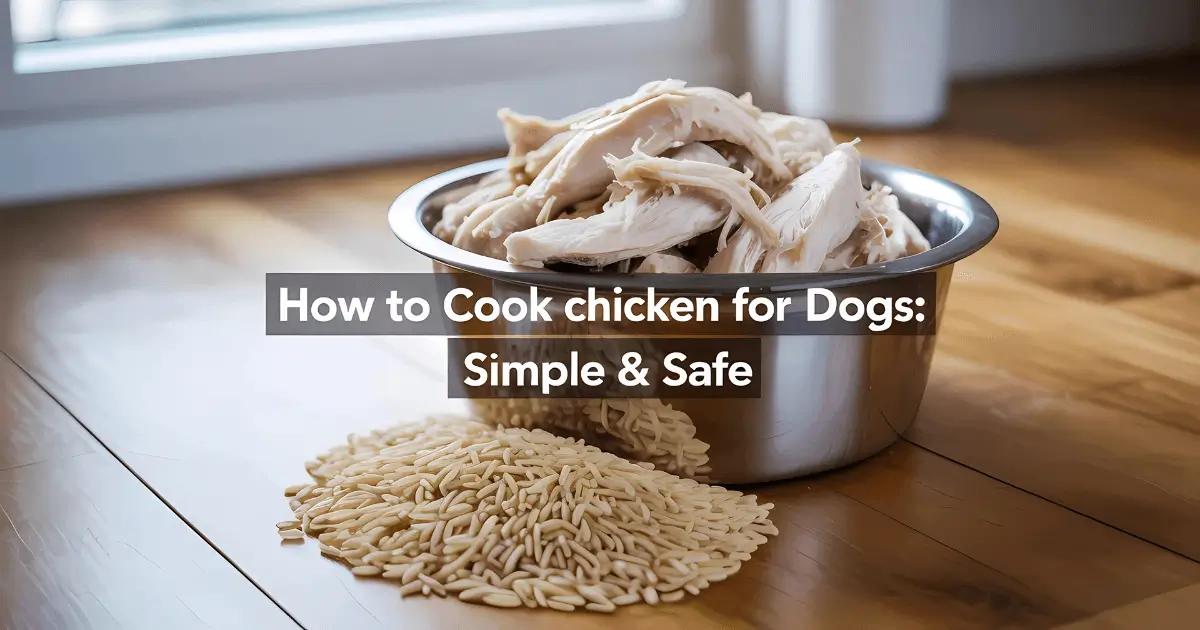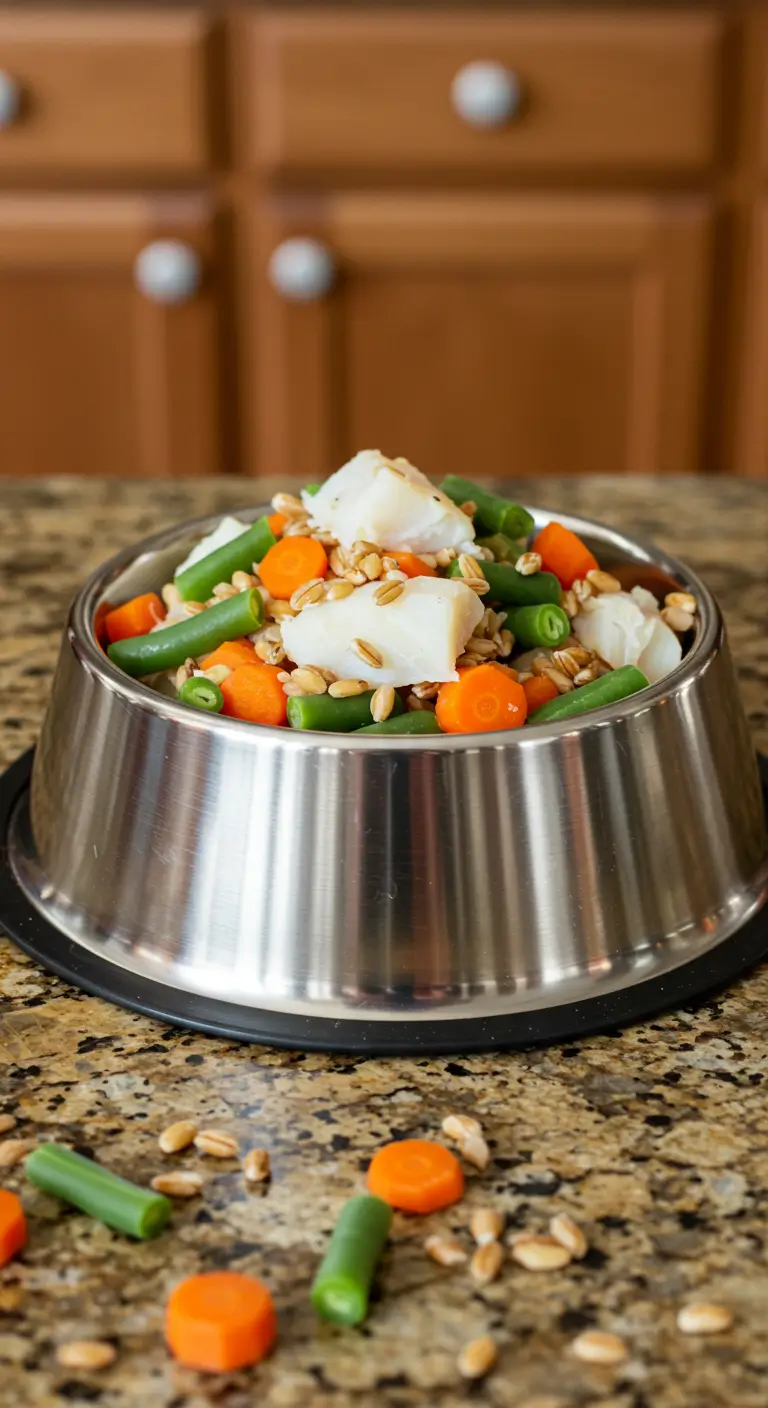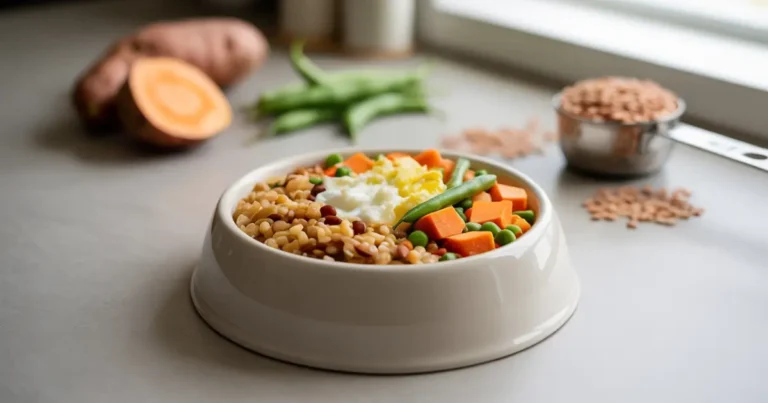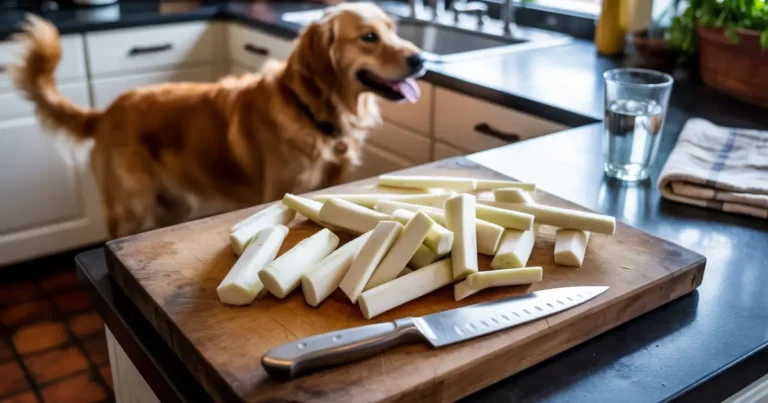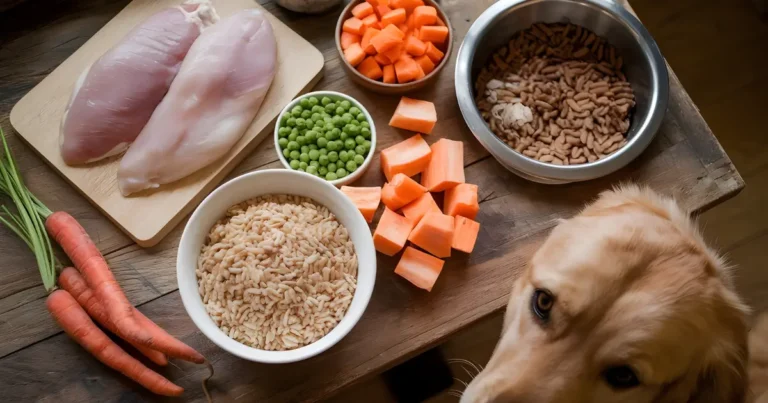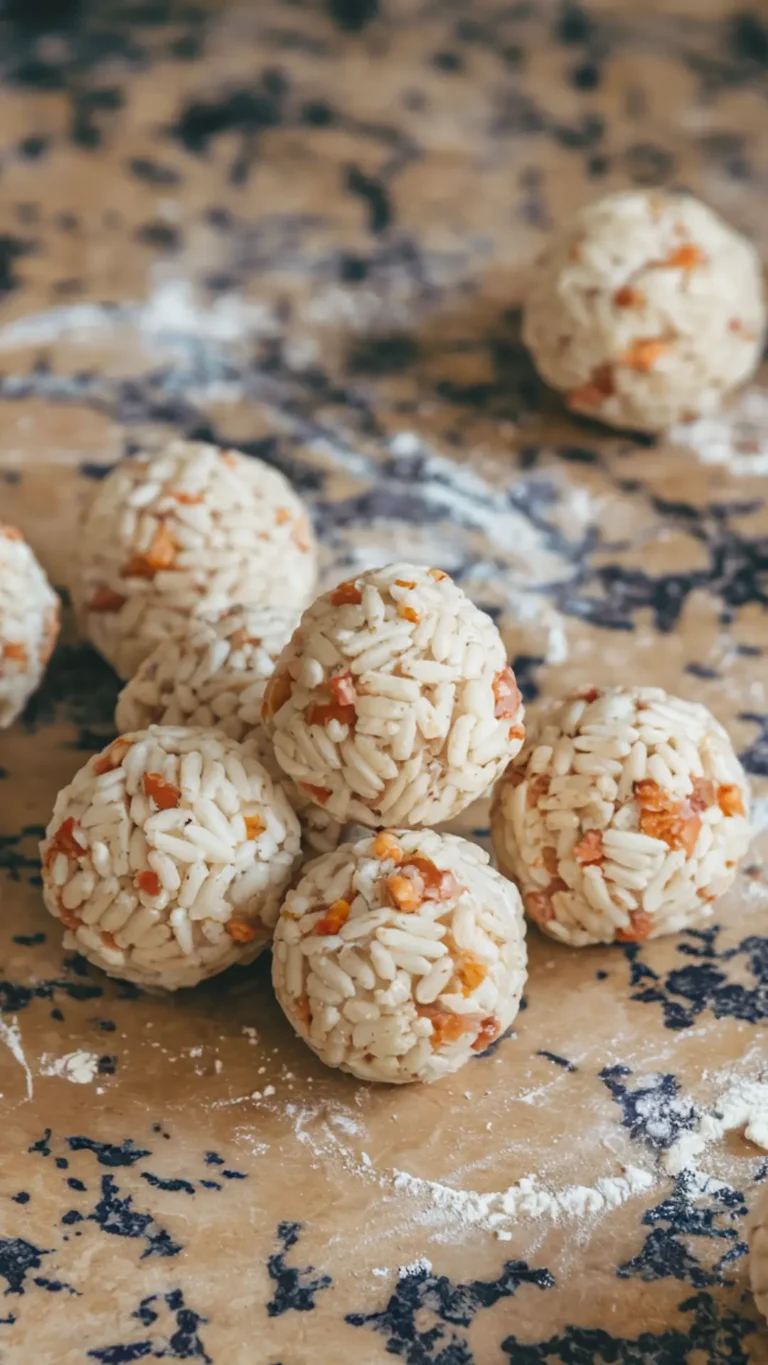How to Cook Chicken for Dogs: 5 Easy Steps for Delicious Meals
Chicken is one of the most popular protein sources for dogs, and learning how to cook chicken for dogs properly ensures your furry friend gets maximum nutrition with minimum risk. Whether your dog is recovering from an upset stomach, has food sensitivities, or you simply want to add some home-cooked goodness to their diet, properly prepared chicken can be an excellent addition to your dog’s meal plan.
In this comprehensive guide, we’ll walk through everything you need to know about how to cook chicken for dogs safely and nutritiously. From preparation methods to serving suggestions and nutritional benefits, you’ll discover why so many veterinarians recommend chicken for canine diets.
Table of Contents
Is Chicken Good for Dogs? The Nutritional Benefits
Before diving into how to cook chicken for dogs, let’s understand why chicken is such an excellent protein source for your canine companion. Is chicken good for dogs from a nutritional standpoint? Absolutely—and here’s why:
Lean Protein Source
Chicken, particularly white meat without skin, provides:
- High-quality, easily digestible protein
- Essential amino acids for muscle maintenance and growth
- Low fat content (when prepared properly)
- Approximately 30 grams of protein per 100 grams of meat
Rich in Essential Nutrients
When considering whether chicken is good for dogs, the nutrient profile stands out:
- B vitamins: Help the nervous system and energy production
- Phosphorus: Works with calcium for bone health
- Selenium: Acts as an antioxidant, protecting cells
- Zinc: Supports immune function and skin health
Easily Digestible
One reason veterinarians often recommend learning how to cook chicken for dogs is its digestibility:
- Gentle on sensitive stomachs
- Lower risk of allergic reactions compared to beef or dairy
- Helps during gastrointestinal upset recovery
- Highly palatable even for picky eaters
Weight Management Support
For dogs needing weight management, knowing how to cook chicken for dogs properly is valuable because:
- Lean protein promotes satiety
- Supports muscle maintenance during weight loss
- Provides nutrition without excess calories when prepared without skin
- Can replace higher-fat protein sources in the diet
How to Cook Chicken for Dogs: 5 Essential Steps
Learning how to cook chicken for dogs safely involves following some important guidelines. Here’s a step-by-step approach to preparing chicken that’s both safe and nutritious for your canine companion:
Step 1: Choose the Right Chicken
The first step in how to cook chicken for dogs starts at the store:
- Select fresh, high-quality chicken
- Opt for boneless, skinless chicken breasts for the lowest fat content
- Consider organic or free-range options when possible
- Avoid pre-seasoned or marinated chicken products
Step 2: Prepare the Chicken Properly
Before learning how to boil chicken for dogs or using other cooking methods:
- Rinse the chicken under cold water
- Remove any visible fat or skin
- Cut into appropriate-sized pieces based on your dog’s size
- Never add seasonings, onions, garlic, or salt
Step 3: Choose Your Cooking Method
When mastering how to cook chicken for dogs, boiling is often recommended, but there are several options:
How to Boil Chicken for Dogs
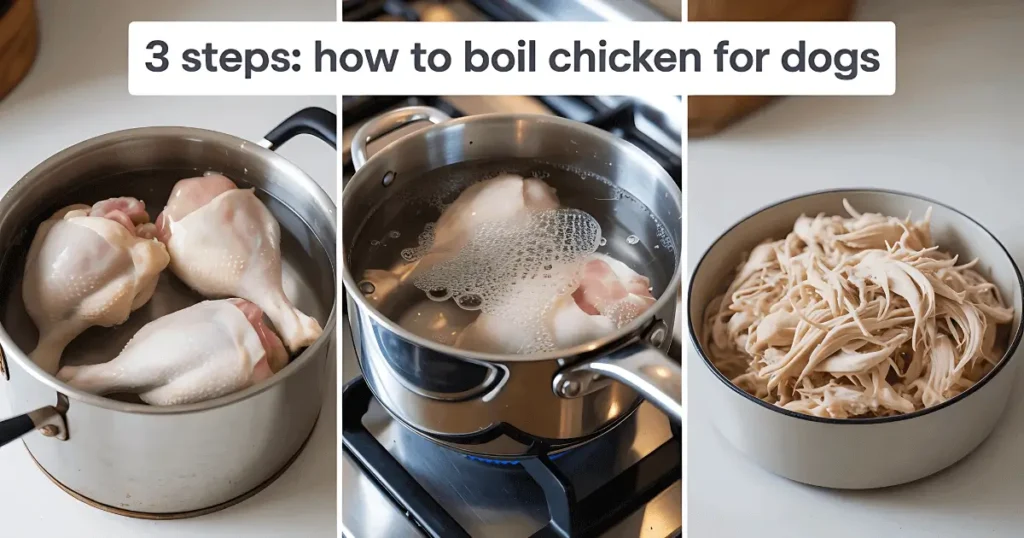
How to boil chicken for dogs is the most common preparation method:
- Put the chicken in a pot and pour water over it.
- Bring to a boil over medium-high heat
- Reduce heat and simmer for 12-15 minutes or until fully cooked
- Ensure internal temperature reaches 165°F (74°C)
- Allow to cool before serving
Boiling is ideal because it:
- Retains moisture without added fats
- Creates a nutritious broth you can use
- Minimizes fire risk compared to other methods
- Makes chicken easy to shred for mixing
Alternative Cooking Methods
While how to boil chicken for dogs is straightforward, other methods include:
Baking:
- Preheat oven to 350°F (175°C)
- Place chicken on a parchment-lined baking sheet
- Bake until the internal temperature reaches 165°F, 20 to 30 minutes.
- Let cool completely before serving
Poaching:
- Put the chicken in a pan with just enough water to cover it.
- Add no seasonings
- Simmer gently until cooked through
- Results in tender, moist chicken
Step 4: Cool and Prepare for Serving
After learning how to cook chicken for dogs, proper cooling is essential:
- Let the chicken cool completely before serving.
- For faster cooling, cut into smaller pieces.
- Hot chicken can burn your dog’s mouth, so never serve it to them.
- Refrigerate any portions not immediately used.
Step 5: Portion and Store Appropriately
The final step in how to cook chicken for dogs involves proper storage:
- Store cooked chicken in airtight containers
- Refrigerate for up to 3-4 days
- Freeze portions in ziplock bags for up to 2-3 months
- Label containers with the cooking date for tracking freshness
How to Make Chicken and Rice for Dogs: The Perfect Recipe
One of the most recommended bland diets for dogs with upset stomachs is chicken and rice. Understanding how to make chicken and rice for dogs properly can help your pup recover faster from digestive issues. Here’s a veterinarian-approved chicken and rice dog food recipe that’s simple and effective:
Ingredients for Chicken and Rice Dog Food Recipe
For this chicken and rice dog food recipe, you’ll need:
- 2 cups of boneless, skinless chicken breast
- One cup of white rice (for upset stomachs, avoid brown rice).
- 4 cups of water
- Optional: 1 cup of plain pumpkin puree (not pie filling) for fiber
Instructions: How to Make Chicken and Rice for Dogs
Follow these steps for the perfect recipe for dog food with chicken:
- Prepare the rice:
- Rinse 1 cup of white rice thoroughly
- Add to the pot 2 cups of water
- Bring to a boil, then reduce the heat
- Simmer, covered, for 15 to 20 minutes, or until the water is absorbed.
- Remove from the heat and let cool
- Cook the chicken:
- Follow the How to boil chicken for dogs instructions from above
- Use 2 cups of water to boil the chicken
- Save the cooking broth after the chicken is done
- Shred the chicken into small, bite-sized pieces
- Combine ingredients:
- Mix the cooled rice and shredded chicken
- Add up to 1 cup of the reserved chicken broth for moisture
- If using, fold in the pumpkin puree for added fiber
- Mix thoroughly for even distribution
- Cool and portion:
- Allow the mixture to cool completely before serving
- Portion according to your dog’s size and needs
This recipe for dog food with chicken creates a gentle meal that’s:
- Easy to digest
- Soothing for irritated digestive systems
- Palatable for dogs with decreased appetites
- Nutritionally supportive during recovery
Serving Recommendations
When feeding this chicken and rice dog food recipe:
- Little dogs (less than 20 pounds): ½ to ¾ cup each meal
- Medium dogs (20-50 lbs): ¾-1.5 cups per meal
- Large dogs (50+ lbs): 1.5-3 cups per meal
Feed this mixture in place of regular food for 2-3 days during intestinal upsets, then gradually transition back to regular food by mixing increasing amounts of regular food with decreasing amounts of the chicken and rice mixture.
Serving Guidelines: How Much Chicken Can Dogs Eat?
When learning how to cook chicken for dogs, understanding proper portions is crucial:
Daily Portion Guidelines
The amount of chicken to serve depends on your dog’s:
- Weight
- Activity level
- Age
- Overall diet composition
As a general guideline for plain cooked chicken as part of a balanced diet:
- Small dogs (under 20 lbs): ¼-½ cup per day
- Medium dogs (20-50 lbs): ½-1 cup per day
- Large dogs (50+ lbs): 1-2 cups per day
Important Serving Considerations
When implementing how to cook chicken for dogs in their diet:
- Chicken should not exceed 25-30% of the daily diet
- Always balance with appropriate vegetables, carbohydrates, and supplements
- Introduce new foods gradually to monitor for sensitivities
- Consult your veterinarian for personalized feeding recommendations
Common Questions About Cooking Chicken for Dogs
Let’s address some frequently asked questions about how to cook chicken for dogs:
Can Dogs Eat Chicken Bones?
Dogs should never be fed chicken bones, especially cooked ones, as they can:
- Splinter easily
- Cause choking hazards
- Puncture the digestive tract
- Lead to serious internal injuries or death
This is why learning how to cook chicken for dogs properly always involves deboning the meat.
Is Dark or White Meat Better?
When mastering how to cook chicken for dogs, consider the meat type:
- White meat (breast): Lower in fat, higher in protein, ideal for weight management
- Dark meat (thighs, legs): Higher in nutrients and moisture, better for active dogs
Both are acceptable, but white meat is typically recommended for dogs with pancreatitis or fat sensitivity.
Can I Add Seasonings?
When practicing how to cook chicken for dogs, keep it plain:
- No salt, pepper, garlic, or onions (toxic to dogs)
- No butter, oil, or cooking sprays
- No marinades or seasonings of any kind
- Plain, unseasoned chicken is safest and healthiest
Can I Feed My Dog Chicken Every Day?
While understanding how to cook chicken for dogs is valuable, variety is important:
- Chicken can be part of daily meals, but shouldn’t be the only protein source
- Rotating proteins provide broader nutrient profiles
- Some dogs may develop sensitivities to exclusive chicken feeding
- A balanced diet includes various protein sources, vegetables, and appropriate carbohydrates
Chicken for Dogs with Special Needs
Knowing how to cook chicken for dogs with special dietary requirements is particularly important:
For Puppies
When evaluating whether chicken is good for dogs at different stages of growth:
- Puppies need more protein per pound than adult dogs
- Ensure calcium balance if chicken is a major diet component
- For information on a puppy’s nutritional requirements, always consult a veterinarian.
- Never use chicken as the sole food source without proper supplementation
For Senior Dogs
Older dogs benefit from knowing how to cook chicken for dogs because:
- Easily digestible protein supports muscle maintenance
- Soft texture helps dogs with dental issues
- Can be mixed with warm water to enhance aroma for declining senses
- Provides quality protein for age-related muscle loss prevention
For Dogs with Allergies
If wondering, is chicken good for dogs with sensitivities?
- Some dogs are actually allergic to chicken protein
- Introduce gradually while keeping an eye out for allergy symptoms, such as itching, ear infections, or upset stomach.
- Consider novel proteins if allergies are suspected
- If required, seek allergy testing advice from a veterinarian.
For Weight Management
How to cook chicken for dogs to help them lose weight:
- Use lean breast meat without skin
- Calculate portions carefully based on caloric needs
- Mix with high-fiber vegetables to increase satiety
- Use as a replacement for higher-fat protein sources
What to Add to Chicken for Complete Canine Nutrition
While learning how to cook chicken for dogs is important, chicken alone isn’t nutritionally complete. Consider these healthy additions:
Vegetables Safe for Dogs
To complement your recipe:
- Carrots: Rich in beta-carotene and fiber
- Green beans: Low-calorie and filling
- Pumpkin: Excellent for digestive health
- Sweet potatoes: Source of complex carbohydrates and vitamins
Healthy Carbohydrates
When preparing chicken and rice dog food recipe variations:
- White rice: Easily digestible for upset stomachs
- Brown rice: More nutritious for everyday meals
- Quinoa: Protein-rich grain alternative
- Oats: Source of soluble fiber and nutrients
Essential Supplements
To balance a homemade dog food recipe that includes chicken:
- Calcium supplement (especially important if feeding regularly)
- Omega-3 fatty acids for skin, coat, and inflammation
- Vitamin E for antioxidant protection
- Multivitamin formulated for dogs on homemade diets
Comparing Cooking Methods for Dog-Safe Chicken
When researching how to cook chicken for dogs, different methods yield different benefits:
| Cooking Method | Pros | Cons | Best For |
|---|---|---|---|
| Boiling | Sick dogs, adding to kibble, Bland diets | Some nutrient loss in water, Time-consuming | Gentle cooking method, maintains moisture, creates mild broth |
| Baking | Retains more nutrients, No added fats needed, Less messy | Fast cooking time, very tender results, One-pot cooking | Regular meal prep, Batch cooking |
| Poaching | It can dry out easily. More difficult to shred | Takes monitoring, Less convenient | Sensitive stomachs, Picky eaters |
| Pressure Cooking | Takes monitoring, less convenient | Requires special equipment, Learning curve | Bulk preparation, Time-saving |
Signs Your Dog Benefits from Chicken in Their Diet
After implementing how to cook chicken for dogs in their meals, look for these positive signs:
- Improved coat shine and quality
- Healthy weight maintenance
- Increased energy levels
- Better digestion and stool quality
- Enhanced appetite and meal enjoyment
When to Avoid Chicken for Dogs
Despite knowing how to cook chicken for dogs properly, chicken isn’t right for every dog:
- Dogs with confirmed chicken allergies
- Dogs with certain protein intolerances
- When prescribed specific veterinary diets that exclude chicken
- Dogs with conditions requiring very specific protein sources
Key Takeaways
- How to cook chicken for dogs properly involves choosing appropriate cuts, avoiding seasonings, and cooking thoroughly
- How to boil chicken for dogs is the simplest and often preferred method for easy digestion
- Is chicken a healthy source of protein for dogs? Yes, when prepared properly and fed in appropriate amounts
- Chicken and rice dog food recipe provides a gentle, nutritious option for dogs with upset stomachs
- How to make chicken and rice for dogs involves simple ingredients and preparation for maximum digestibility
- Recipe for dog food with chicken should always include a proper nutrient balance through additional ingredients or supplements
Conclusion
Mastering how to cook chicken for dogs is a valuable skill for any pet parent. Whether you’re preparing a gentle meal for a dog with digestive upset, enhancing their regular kibble with added protein, or creating a special treat, properly cooked chicken can be a nutritious addition to your dog’s diet.
Remember that while understanding how to make chicken and rice for dogs is useful, balance is key. Chicken alone doesn’t provide complete nutrition, so always ensure your dog receives all necessary nutrients either through a balanced commercial diet or carefully planned homemade meals with appropriate supplements.
By following the guidelines in this article, you can confidently prepare chicken that’s safe, nutritious, and delicious for your canine companion. Your dog will enjoy the tasty addition to their diet, and you’ll have the satisfaction of providing home-cooked goodness with their health in mind.
Frequently Asked Questions
How long should I boil chicken to make it safe and healthy for my dog?
When learning how to boil chicken for dogs, timing is important. Boneless chicken breasts typically require 12-15 minutes of simmering in boiling water to reach a safe internal temperature of 165°F (74°C). Bone-in pieces may take 25-30 minutes. Make sure the chicken is cooked through by making sure the juices run clear and there is no pink left in the middle. The size and thickness of the chicken pieces can affect how long they take to cook.
Can I feed my dog store-bought rotisserie chicken?
While understanding how to cook chicken for dogs at home is best, store-bought rotisserie chicken can be used occasionally with precautions: remove all skin, bones, and seasoned portions; use only the plain meat; rinse lightly to remove some salt; and serve in small amounts. But since rotisserie chicken usually contains seasonings that aren’t good for dogs and a lot of sodium, it’s much better to make plain chicken at home using the right methods for cooking chicken for dogs.
Is chicken and rice a good meal option for dogs with diarrhea?
Yes, for dogs with mild diarrhea, veterinarians frequently recommend a well-prepared chicken and rice dog food recipe. The combination is easily digestible, gentle on the stomach, and helps firm up stools. When making chicken and rice for dogs with digestive issues, use plain boiled chicken and white rice (not brown), ensure both are cooled completely, and feed small, frequent meals. Unless your veterinarian instructs you otherwise, this diet should only be followed for two to three days before a gradual return to regular food is made.
How can I determine whether my dog has a chicken allergy?
Despite chicken being nutritious, when you know how to cook chicken properly for dogs, some dogs are allergic to chicken protein. Signs of chicken allergies include: itchy skin, particularly around the paws, face, and ears; recurring ear infections; gastrointestinal upset, including vomiting or diarrhea; and chronic skin issues. If you suspect your dog has a chicken allergy, eliminate chicken from their diet for 8-12 weeks and observe for improvement. Consult your veterinarian for proper allergy testing and dietary recommendations.
Can puppies eat chicken and rice?
Puppies can eat a properly prepared chicken and rice dog food recipe, but this should not replace a complete puppy food formulation for more than a few days. When considering how to make chicken and rice for dogs that are still growing, remember that puppies have specific nutritional requirements vital for proper development. For occasional stomach upset, chicken and rice can be appropriate, but always return to a balanced puppy formula quickly. Consult your veterinarian before making any significant dietary changes for puppies.

